Modern stripes meet vintage florals. A plush sheepskin throw paired with a cool leather sofa. A sculptural table lamp on a sharp, rectangular table. In interior design, sparks fly when opposites collide. That’s the magic of contrast — a basic, crucial principle of design and art.
Our interior designers use contrast to create visual interest and harmony in a space. Contrast can range from obvious opposites — like a graphic black and white color palette — to more subtle juxtapositions — like a round light oak dining table paired with edgy leather dining chairs. No matter your approach, contrast is what makes a space feel unique, dimensional, and balanced (no matching furniture says or beige-on-beige here).
Ahead, find 10 foolproof ways to add eye-catching contrast to your space, courtesy of our design team.
1. Contrast Colors
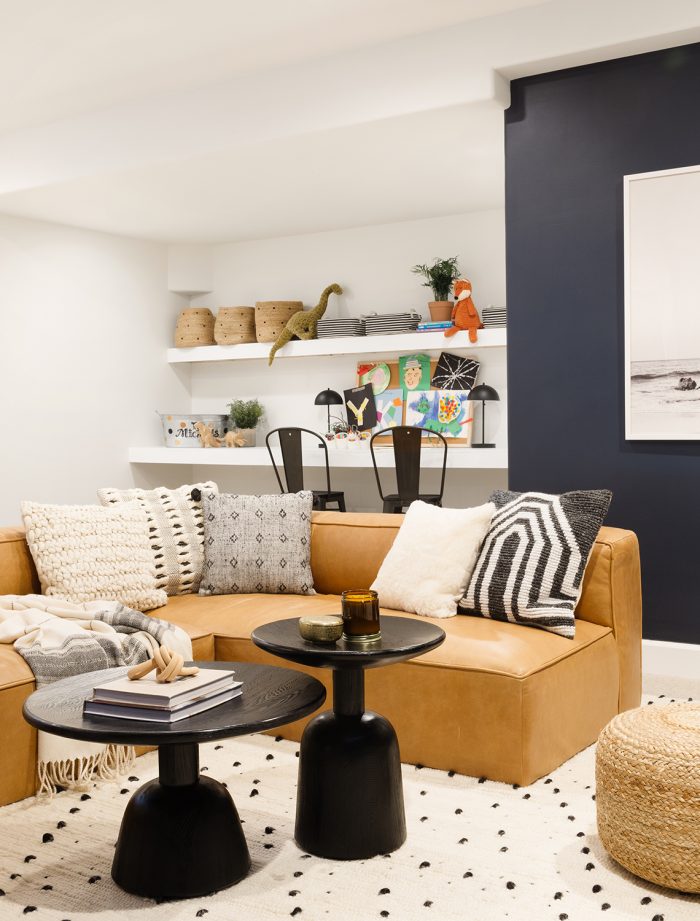
It doesn’t get easier than this: Pair dark hues and light tones to create contrast through color. While black and white is a fail-safe formula for timeless drama, unexpected color combinations, like soft blush with bold emerald green, add polish, sophistication, and visual interest to a space, too.
2. Contrast Patterns
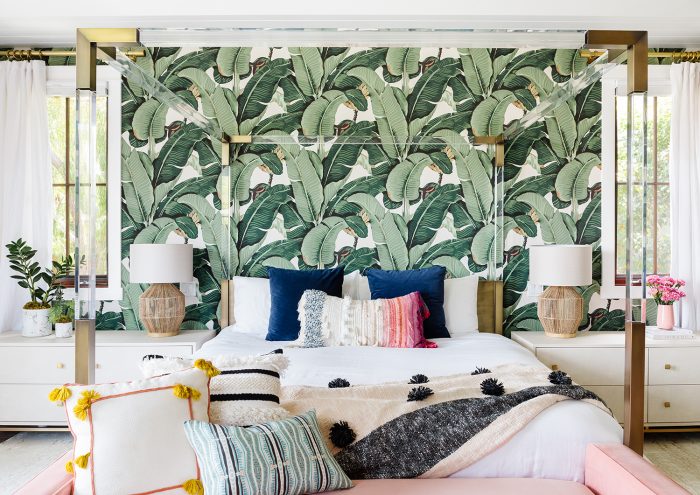
Another way to make a statement through contrast? Layering different patterns in a single space. For example, mix clean stripes with more abstract patterns, such as botanicals or florals. Or, pair a large-scale print with a high-repeat motif. Pro tip: Incorporate a few solids into the mix to provide visual breathing room.”
3. Contrast Styles

If you find yourself drawn to the clean lines of Scandinavian furniture and the riotous color of a global approach, you don’t have to choose between the two. Instead, bring in furniture and decor from different eras, influences, and design styles for a unique, layered look. In the above living room, old meets new with the ornate gold mirror and modern accent tables.
4. Contrast Textures
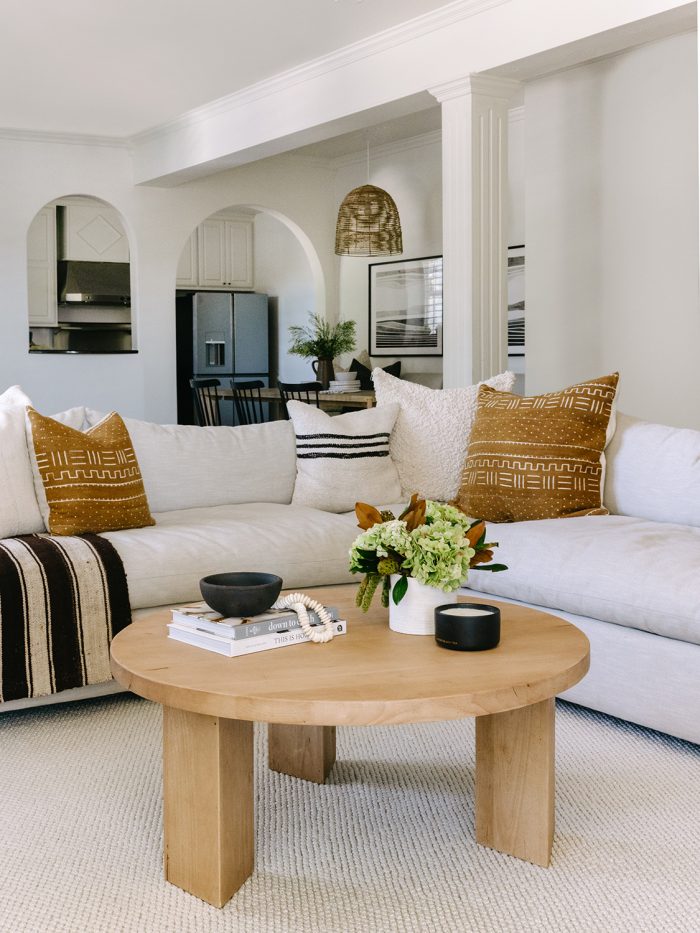
When a space features the same material from wall to wall (i.e. all upholstered furniture or all brass finishes), the result is visually boring. From jute and wicker to linen, wood, and wool, contrasting different textures in a single space keeps things interesting. This is especially important when sticking to a minimalist color palette — texture adds warmth and interest!
5. Contrast Shapes

Skip all angular, square furniture or all soft curves — pair the structural with the sculptural for eye-catching dimension. In the above living room, for example, the rectangular coffee table and sofa stand out against the round swivel chairs and woven ottomans. Just imagine if every piece of furniture in this space was boxy and rectangular — it would fall flat.
6. Contrast Frames
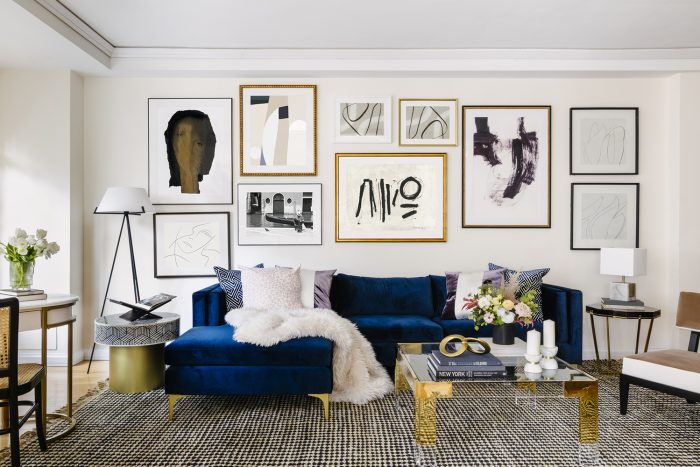
Creating contrast can be as simple as pairing mis-matched frames in a statement gallery wall. Take the above living room, for example. Rather than opting for matching frames, the mix of modern matte black with ornate, traditional gold adds a hint of subtle interest.
7. Contrast Decor

Your chosen decor can be a source of aesthetically-pleasing tension, too. In the above Reading Room, the books add a pop of eye-catching color against the white built-in and neutral sofa, throw pillows, and area rug. It’s such a simple addition, but very effective!
8. Contrast Scale
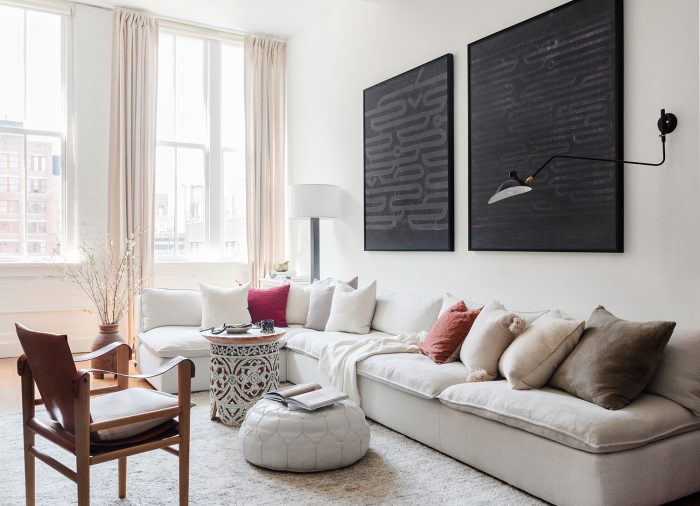
For an unexpected touch of contrast, pair small, low-slung pieces with the diametric opposite: exaggerated and oversized. In the above living room, for example, the massive duo art prints and tall ceilings feel even more dramatic set against the low-slung sofa and small pouf. On a smaller scale, pair large, oversized throw pillows with small bolster or lumbars!
9. Contrast Artwork
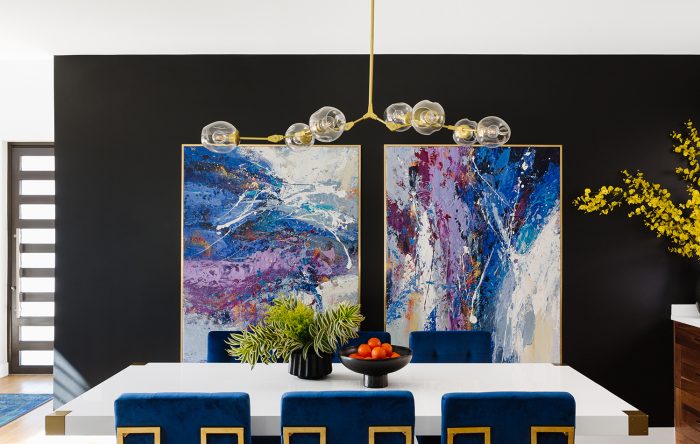
Similar to contrasting colors, create visual intrigue with your chosen artwork. In the above dining room, for example, the vibrant artwork really pops against the edgy black walls. Paired with a clean white table and cobalt blue tones throughout, the finished space is cohesive and balanced.
10. Contrast Metals
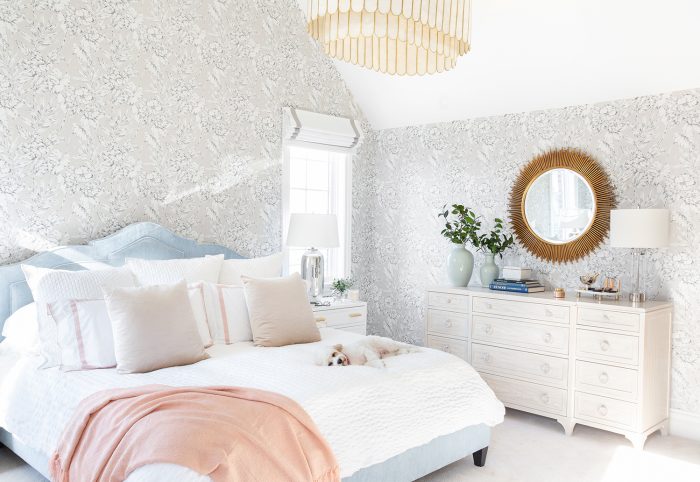
The art of mixing metals is so visually intriguing, we already wrote a complete guide dedicated to the subject. But to summarize, always vary metals and finishes in a space to keep things interesting, particularly in kitchens and bathrooms. An easy trick? Keep lighting all one metal (like brass), and all door and cabinet hardware another (all matte black). This ensures a balanced, interesting mix.
Want expert advice on your actual home, straight from an interior designer? Start with our style quiz to work with a design pro one-on-one.

